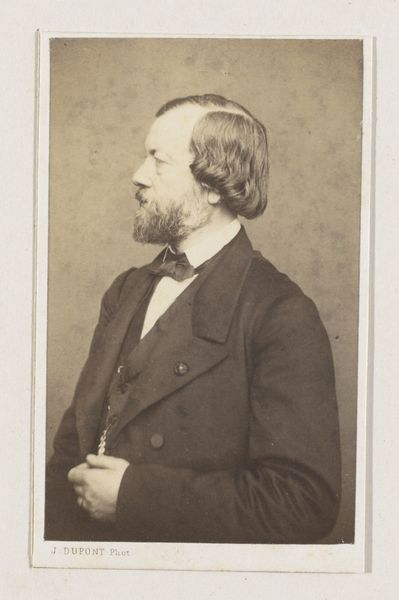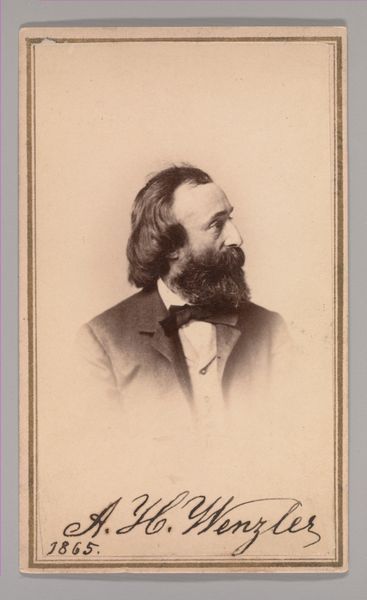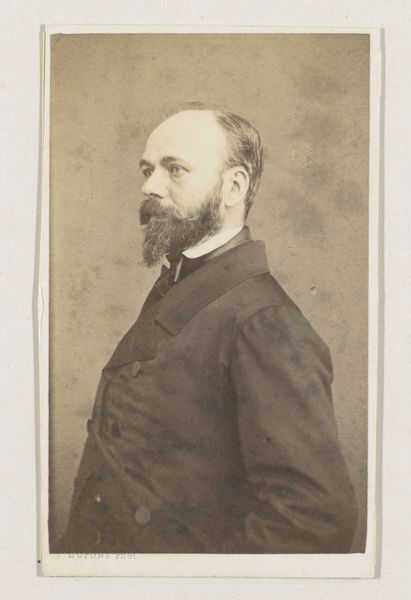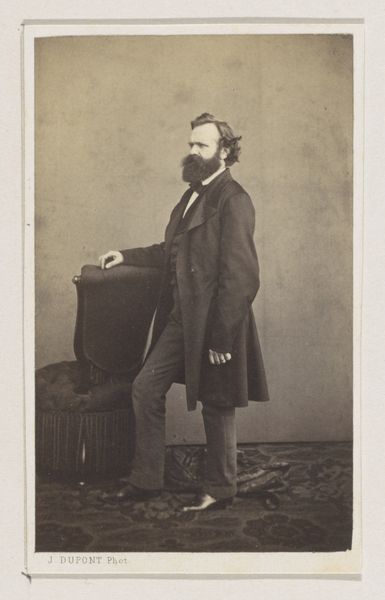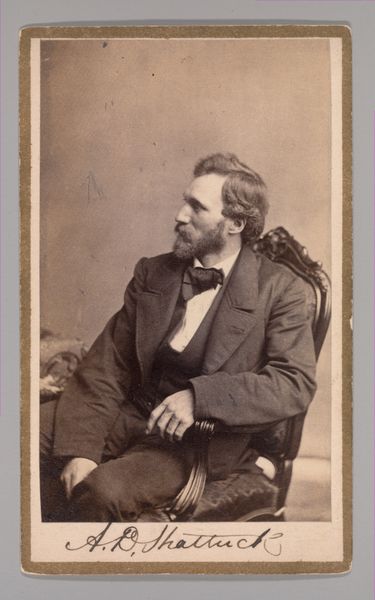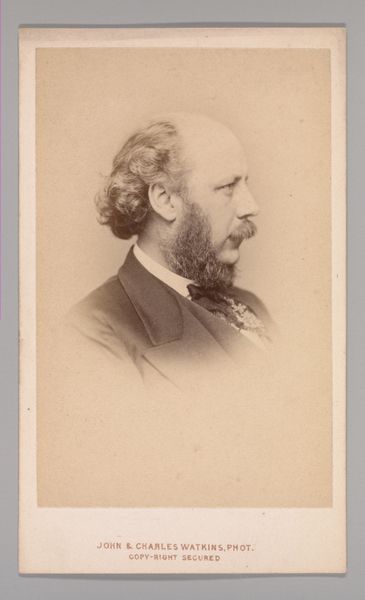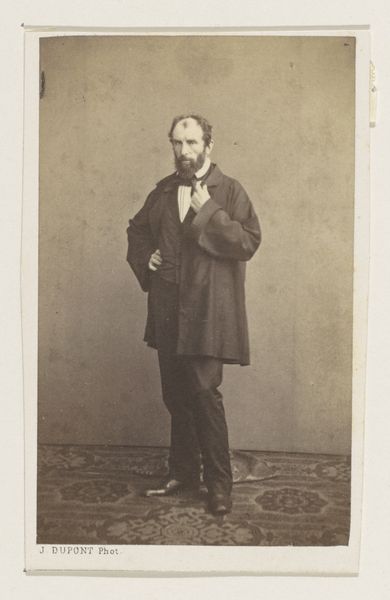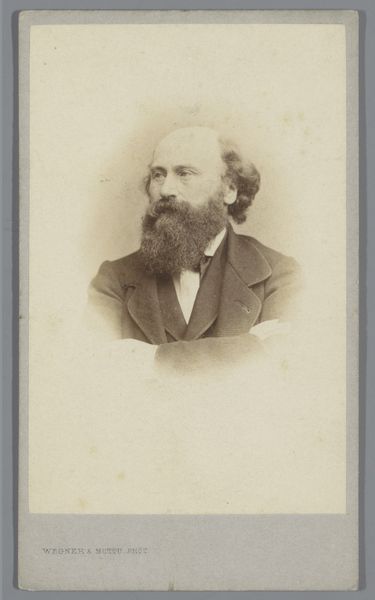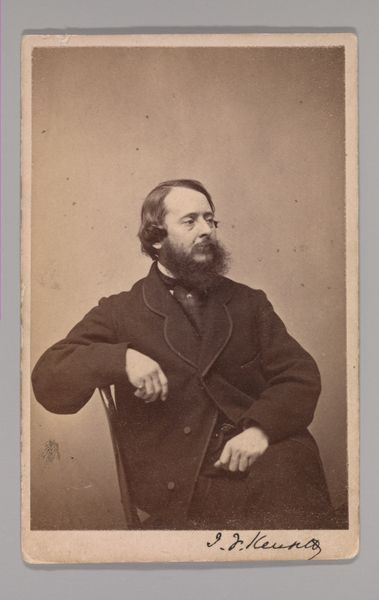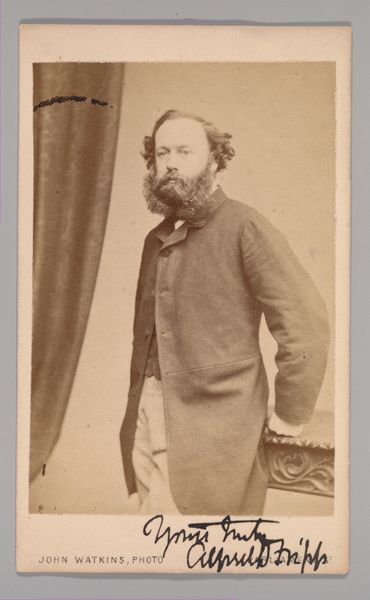
daguerreotype, photography
#
portrait
#
16_19th-century
#
daguerreotype
#
photography
#
realism
Dimensions: height 101 mm, width 62 mm
Copyright: Rijks Museum: Open Domain
Curator: Let’s turn our attention to this fascinating portrait, titled "Portret van de schilder August de Wilde, halffiguur," created by Joseph Dupont in 1861. It's a daguerreotype, a very early photographic process. Editor: My initial reaction is one of quiet dignity, yet tinged with a melancholy born from its stark realism and the almost sepia tones of its presentation. I’m immediately drawn to the subject's clothes, and the slight fraying at the collar; there’s a labor evident in the garment itself, I think. Curator: Indeed. The image possesses a solemn aura, indicative of the subject’s internal world as well as societal conventions regarding portraiture at the time. The sitter faces to the side, his sharp, clean-shaven cheek contrasting with his detailed beard, suggesting a separation of identities. Editor: I find myself questioning the circumstances around its production; as a daguerreotype, it would have taken considerably longer to produce compared to later photographic techniques. Consider the posing, the potential constraints of the setting… Dupont had to possess more than just technical skill, but the social ability to usher Wilde through such conditions. Curator: Quite right. He must’ve possessed the ability to ease De Wilde into a relaxed state, a familiarity apparent from his candid expression, almost lost in introspection. Perhaps that is why he presents such confidence yet vulnerability. The beard itself is suggestive of many qualities valued in mid-19th century European society. Editor: It brings attention to questions about photography's role during its rise; photography democratized representation, moving artistic creation from the upper class down into an available skill for working-class artisans such as Dupont. It suggests photography helped change class systems! Curator: True, photography allowed for new social and psychological interpretations. This portrait goes beyond surface likeness; we’re invited to contemplate the artist's identity through Dupont's lens and choice of angle and contrast. The psychological and cultural layers here run deep. Editor: Thinking about Dupont as the "Phot" inscribed at the bottom and his position within the studio – those hands retouching glass are full of human labor and artistry—reveals photography as an occupation embedded within larger economies of art. Curator: An insightful point. This piece encapsulates not just a portrait, but a whole historical and social moment preserved in a unique way through photography, one we’re privileged to now explore. Editor: Precisely! It shows the layers of industry within one single portrait—illuminating stories both of sitter and artisan within a singular artifact.
Comments
No comments
Be the first to comment and join the conversation on the ultimate creative platform.
